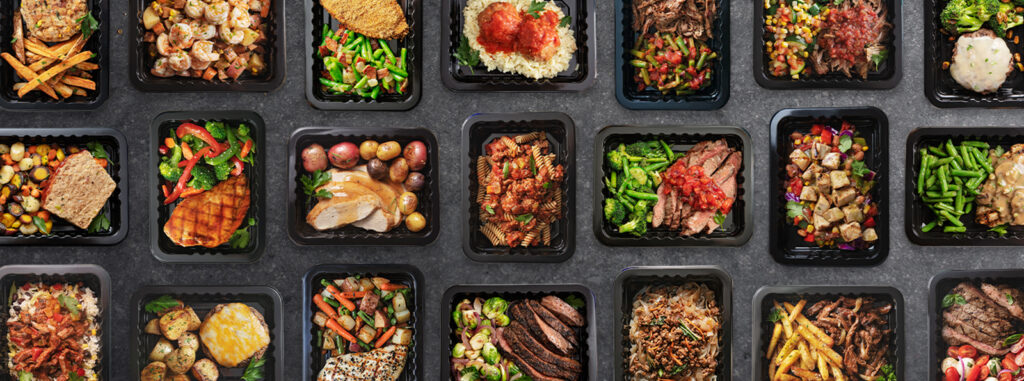ARTICLE AT A GLANCE
Are your sugar cravings out of control? It’s not just you.
Research shows that sugar addiction is a real phenomenon. Poor food choices, clever marketing and a lack of nutritional knowledge has contributed to a nation that is addicted to sugar and subsequently dealing with an obesity crisis.
Fortunately, there’s something you can do about it with these three strategies, proven to help stop those sugar cravings for good.
Sugar is Everywhere
The US Department of Agriculture estimates that the average American consumes 66 pounds of sugar per year. That comes out to 82g or 19.5 teaspoons daily. Shockingly, 10% of adults get 1/4 of their total calories from sugar!
Sugar seems to be everywhere, including packaged goods that are marketed to be healthy. It’s not uncommon for a high protein, non-GMO, allergy-friendly snack bar to have 20g -30g of sugar per serving.
Did you know that a 32 oz. sports drink has more sugar than 5 glazed donuts? Unless you just completed the Boston Marathon, you probably aren’t going to need that.
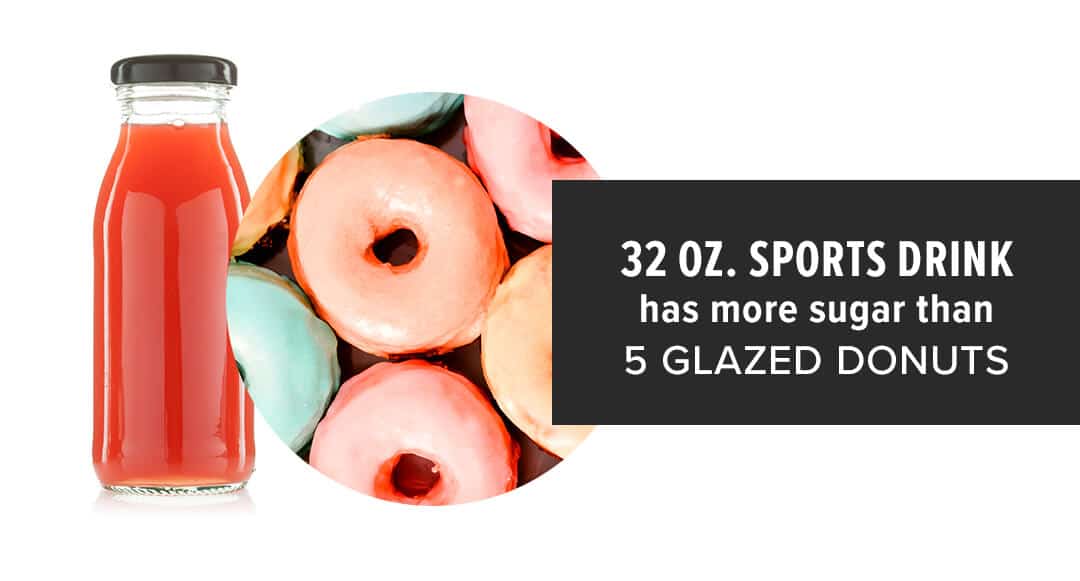
Sugar Addiction: Oh, It’s Real!
Researchers from Boston Children’s Hospital’s Obesity Prevention Center devised a high quality test to prove whether meals with a high glycemic index and high sugar content would trigger an addiction phenomenon, not in behavior alone, but in the brain.
The Study Details:
- Investigators analyzed 12 obese men ages 18-35.
- The men were given two different meal replacement shakes, indistinguishable by sight and taste and even calorie count, but very different in glycemic content (amount of sugar).
- One milkshake had a high glycemic index (high-GI), one had a low glycemic index (low-GI).
The really interesting impact of the high-GI meal shake was what happened in the brain four hours later:
- Four hours after each shake was eaten, when the participants would likely be thinking about what to eat at their next meal, they were asked to rate their hunger.
- At the same time, the investigators took blood to measure glucose levels and used functional MRI to measure blood flow to the brain.
Here’s What Was Found:
Compared to those who eat the low-GI shake, here’s what the participants eating the high-GI shake experienced four hours later:
- Decreased plasma glucose: This is evidence of a sugar crash – the drop in energy that occurs as blood sugar levels fall.
- Increased hunger: High glycemic index meals intensify hunger.
When you experience a sugar crash and increased hunger, you’re going to be compelled to reach for more sugar to get back to the energy high. It’s a vicious cycle.
How does sugar affect your health?
Refined sugar has far-reaching effects on many of the body’s organs and systems. Most people are well aware of a high sugar diet being linked to diabetes, but a lesser known stat is a possible role in 200,000 deaths worldwide that also includes cardiovascular disease and cancer.
According to Dr. Rhonda Patrick, who specializes in the latest longevity research, “Sugar also affects the brain. It impairs the brain’s ability to heal after trauma, inhibits memory formation and retention, and induces structural changes in the brain similar to those caused by amphetamine, cocaine, and nicotine – powerful stimulant drugs.
Perhaps one of the most disturbing – and long-term – effects of refined sugar on the body is observed at the DNA level. Sugar causes the shortening of the telomeres, accelerating the aging process.”
How do you stop sugar cravings?
1. Breakfast of Champions
Dopamine is a neurotransmitter involved with sugar addiction and is raised when we eat our favorite sweet treats. The brain begins to make connections between the activity and the pleasure, ensuring that we will repeat the behavior.
Luckily we can also raise dopamine with foods that support good health. Raising dopamine in the morning helps us to become motivated with energy and mental clarity instead of that dreaded mid-morning brain fog.
To accomplish this, we need to look for proteins high in the amino acids tyrosine and phenylalanine (precursors for dopamine). Good sources include: beef, bison, eggs, elk, yak and venison. Pair one of those protein sources with a healthy fat source such as 1/2 of an avocado or a handful of cashews, almonds and pistachios.
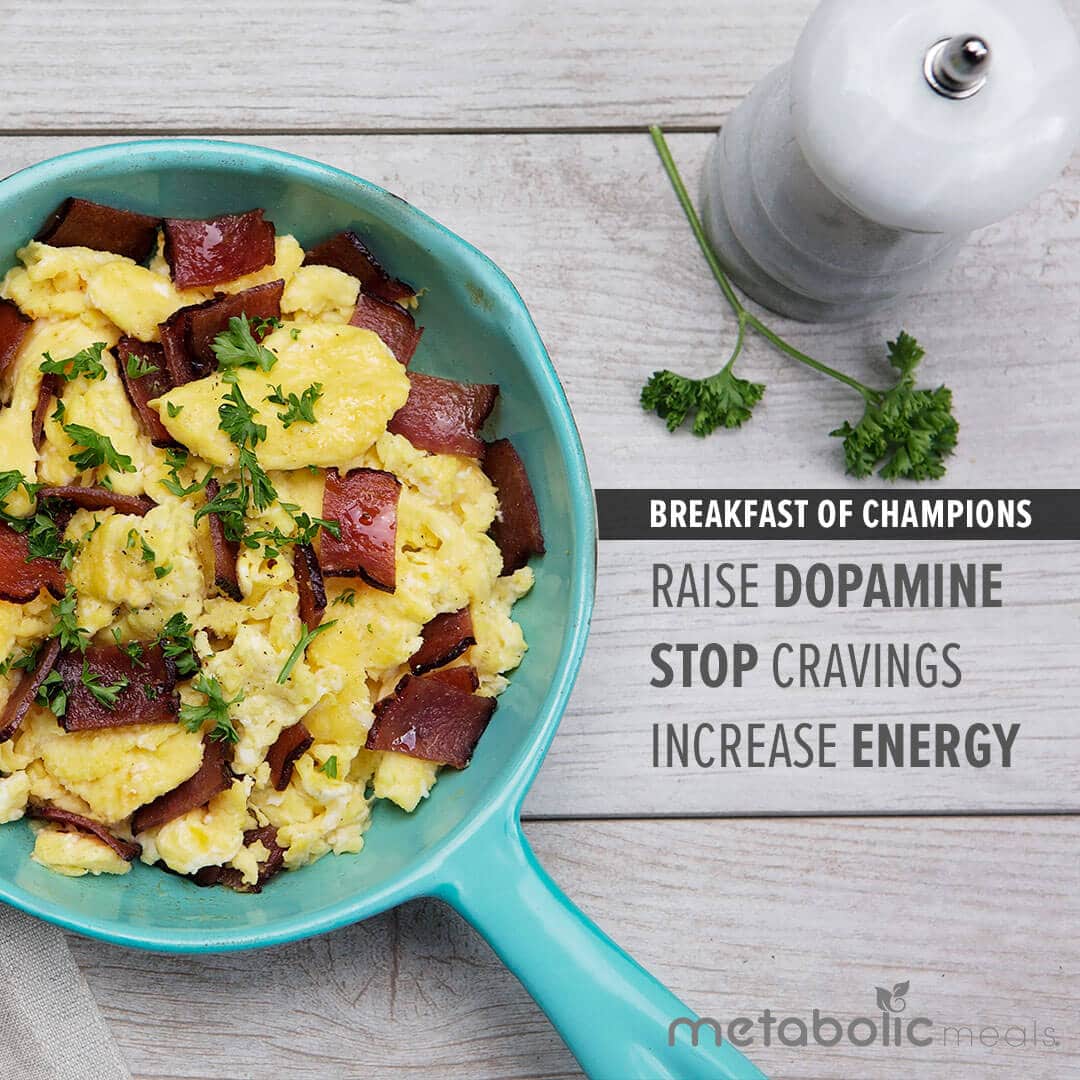
By trading in the cereal, bagels and sugary drinks for a high protein, moderate fat breakfast you can expect a morning full of energy and much fewer cravings.
Healthy, chef-crafted meals, delivered fresh to your door.
2. Shrink Your Feeding Window
We have been told for years that in order to “balance blood sugar,” we must eat multiple small meals per day. The latest research on insulin sensitivity, digestion and other body processes is showing that grazing for 15+ hours per day is causing weight gain, blood sugar irregularities and digestive issues.
According to nutrition guru Dr. Eric Serrano, “eating too frequently actually stresses the liver and pancreas.” “The liver has a 4-hour clock and when we eat more frequently than this, we break the body’s natural digestive rhythm.”
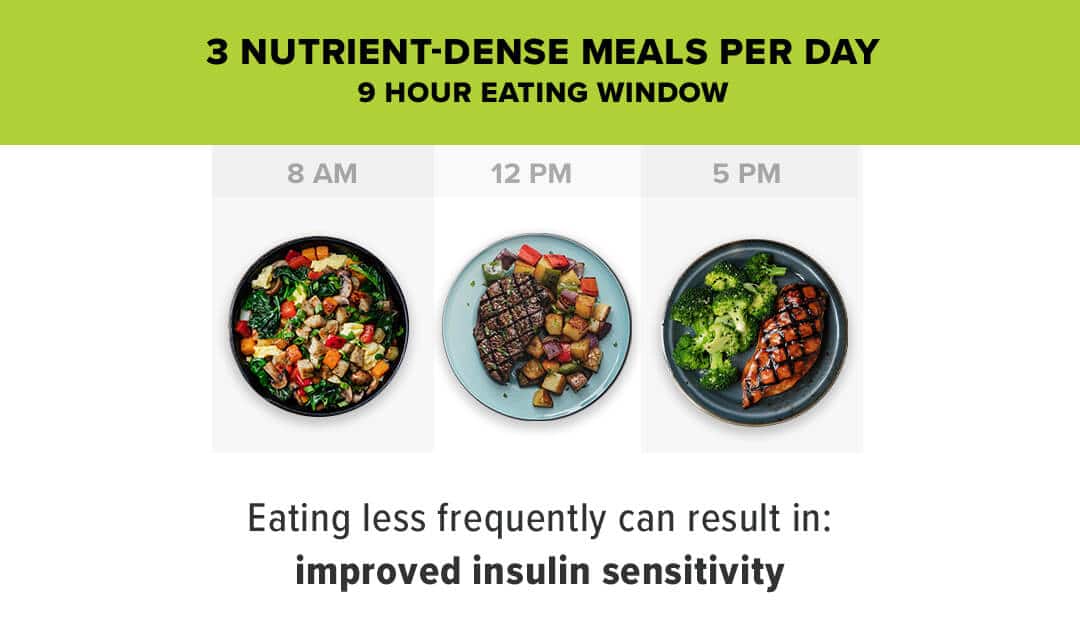
Research is finding that people who eat 3 meals within an 8-10 hour window metabolize fatty acids more efficiently and improve insulin sensitivity.
This combo keeps blood sugar levels away from the peaks and valleys that lead to sugar cravings.
3. Fix Your Cortisol Curve
Cortisol is a hormone produced by the adrenal glands that supplies the body with energy during times of stress and is essential for optimal metabolism, mood, behavior and appetite.
Ideally cortisol should be higher in the morning (helping you to wake up and attack the day) and lower in the evening allowing you to relax and enjoy a restful night’s sleep. This is considered a healthy cortisol curve.
Unfortunately, many people have elevated levels of cortisol all day long because of stress levels and inflammation from eating poorly. This becomes a nasty cycle of sugar cravings, weight gain and poor sleep.
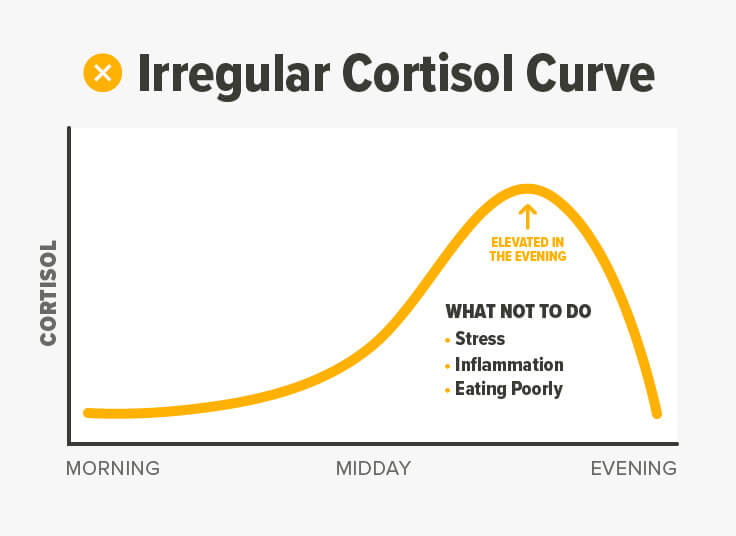
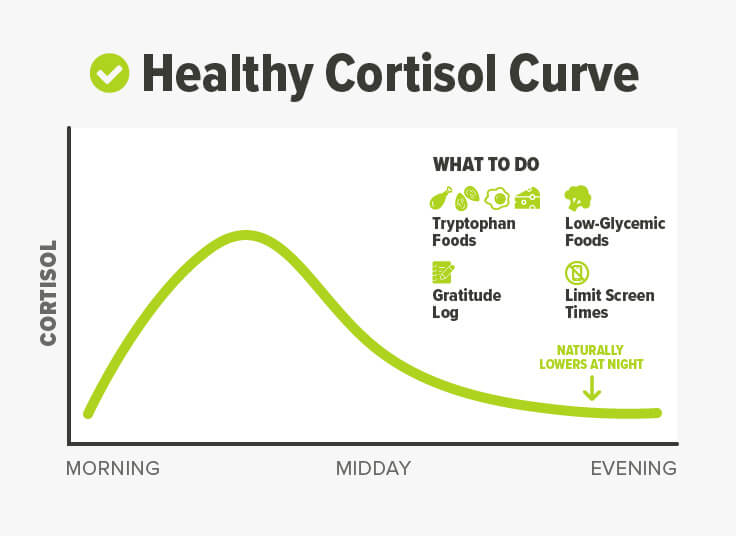
To combat this, we’ll want to use strategies in the PM to naturally lower cortisol that include:
- eating sources of the amino acid tryptophan: turkey, chicken, eggs, cheese, yogurt, nuts
- eating low glycemic foods: vegetables like broccoli, leafy greens, cauliflower
- limiting blue light from screens
- writing in a gratitude log
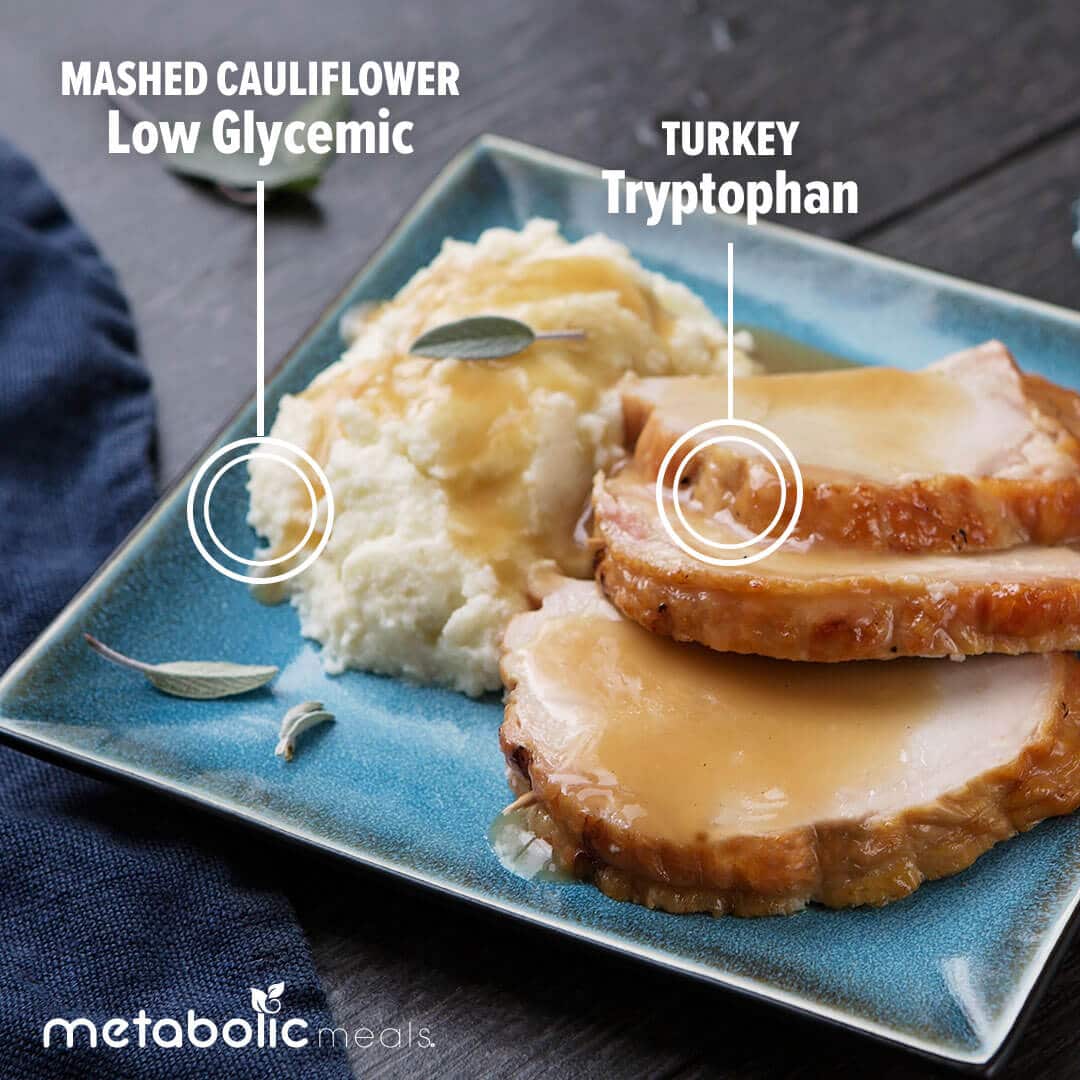
Our Oven Roasted Turkey Breast with Shallot Porcini Gravy and Herbed Mashed Cauliflower is a great option for a PM meal to help naturally lower cortisol.
Your Trusted Partner in Food
Metabolic Meals is a healthy meal delivery company that was established in 2009. We have been involved in some of the country’s top nutritional research studies and been a preferred meal provider for both elite athletes and busy people all across the nation.

We are passionate about helping people take control of their health through food. If you’re looking for a service to help ensure that you’re getting quality nutrition in each of your meals, like what you’ve read about in this article, here’s what you can expect from us:
- Internationally trained chefs prepare your meals from scratch
- Grass-fed, pasture-raised & wild-caught proteins rich in omega 3
- Wide array of organic, non-GMO ingredients
- Meals are prepared in our dedicated gluten-free facility
- A new menu to choose from every week designed by our nutrition team
- Safe, fresh delivery nationwide
- Unbeatable customer service






